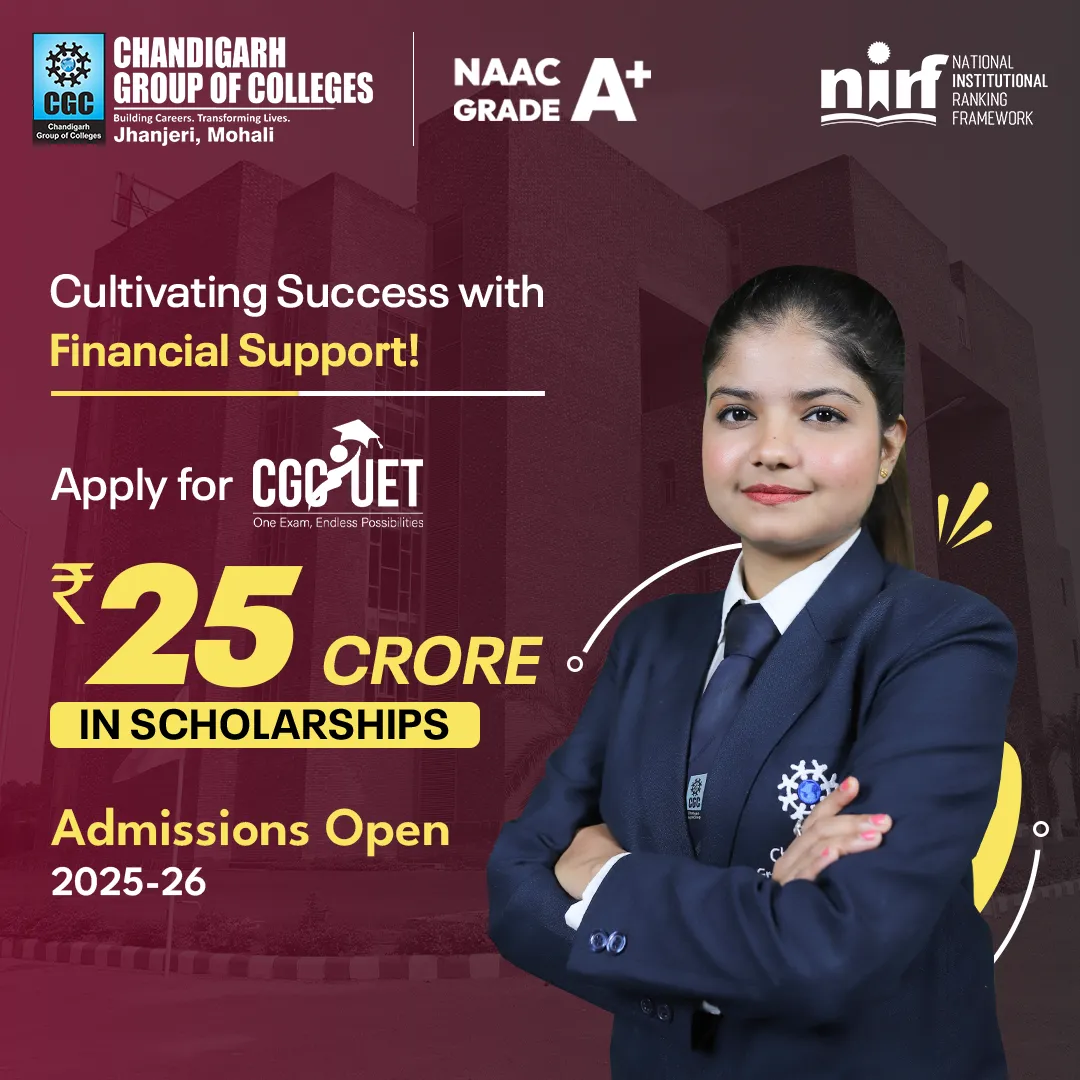B.Sc Multimedia Course Details: Admission, Syllabus, and Career Opportunities
To thrive in the multimedia field when the world has adopted digitization with both hands, proper knowledge of B.Sc Multimedia course details is an asset.
Multimedia has become a pivotal force in today’s digital world, driving both content and communication. For students drawn to the creative arts, technology, and design, a Bachelor of Science (B.Sc) in Multimedia presents an exciting opportunity to blend these interests into a rewarding career.
This blog explores all aspects of a B.Sc in Multimedia, covering course details, admission requirements, syllabus highlights, and potential career paths. Let’s deep dive into what makes this program unique and whether it’s the right fit for your aspirations.

What is a B.Sc in Multimedia?
The full form of B.Sc in Multimedia is Bachelors of Science in Multimedia. It is an undergraduate program that typically spans 3 to 4 years, though the program durations may vary based on the institution. This course teaches a combination of creative and technical skills, allowing students to master various forms of media, including animation, graphic design, video production, and interactive design. Whether your goal is to become a skilled animator, a graphic designer, or even a UI/UX specialist, B.Sc Multimedia course details provide the foundation.
Unlike traditional arts programs, a B.Sc in Multimedia leans into the technological aspects of design and media production, which is why students often use industry-standard software and tools throughout the course. This program is perfect for those who want to learn the technical skills needed to thrive in creative industries, such as film, gaming, advertising, and digital marketing.
Key Skills You Will Learn
A B.Sc in Multimedia equips students with a balanced skill set in both creative design and digital technology, making them valuable assets in a range of industries.
Multimedia professionals need to be well-versed in both creative and technical skills. Here are some of the key skills you can expect to gain:
| Skill | Details |
|---|---|
| Creative Thinking | Developing a creative mindset that allows you to generate unique visual solutions and design ideas. |
| Technical Proficiency | Learning to work with industry-standard tools such as Adobe Creative Suite, Maya, Blender, and more. |
| Problem-Solving | Using a problem-solving approach in design and development to overcome challenges. |
| Project Management | Understanding how to plan, execute, and manage multimedia projects from concept to completion. |
| Communication Skills | Multimedia professionals often collaborate with other creative and technical teams, making effective communication essential for project success. |
Unlike traditional arts programs, B.Sc Multimedia course details lean into the technological aspects of design and media production, which is why students often use industry-standard software and tools throughout the course. This program is perfect for those who want to learn the technical skills needed to thrive in creative industries, such as film, gaming, advertising, and digital marketing.
Overview of B.Sc in Multimedia
The B.Sc in Multimedia is a 3-year, full-time undergraduate course. The program typically spans six semesters, with each semester introducing new subjects that range from design fundamentals to advanced 3D animation.
Key Program Highlights
| Elements | Details |
|---|---|
| Course | B.Sc in Multimedia |
| Duration | 3 years, 6 semesters |
| Type | Full-time degree program |
| Eligibility Criteria | Completion of 10+2 or equivalent from a recognized board |
| Admission Process | Based on merit or entrance exam |
| Job Roles | Graphic Designer, Web Designer, 3D Animator, Video Editor, Digital Marketing Specialist, Game Designer |
Importance of a B.Sc in Multimedia
In today’s digital world, multimedia skills are essential for creating engaging content. A degree in multimedia provides both the technical and creative expertise to meet industry demands in fields like animation, digital advertising, and web design.
Eligibility and Admission Process for B.Sc Multimedia
Before diving into the syllabus and course structure under B.Sc Multimedia course details, it’s essential to understand the eligibility criteria and admission process for a B.Sc in Multimedia. Here’s what prospective students should know:
Eligibility Criteria
Educational Background: Applicants typically need to have completed their 10+2 or equivalent level of education in any stream from a recognized educational board.
Minimum Marks Requirement: Most colleges require a minimum of 50% in the qualifying examination. Some institutions may have slightly higher or lower cutoffs, so it’s advisable to check specific requirements.
Entrance Exams: While many colleges offer direct admission based on 10+2 marks, others require students to pass entrance exams. These exams generally test creativity, technical aptitude, and design thinking.
Admission Process
Here is the generic admission process for candidates willing to pursue B.Sc in Multimedia:
| Steps | Details |
|---|---|
| Application Submission | Applications are typically available online through college portals. Be sure to submit a complete and accurate application with all required documents. |
| Entrance Examination | If an entrance test is required, it may include a mix of aptitude, drawing, and problem-solving questions relevant to multimedia and design. |
| Portfolio Review (if applicable) | Some colleges may ask for a sample of creative work or a portfolio that showcases the applicant’s artistic skills. |
| Personal Interview | Shortlisted candidates may be invited for an interview to assess their interest in the program and their understanding of multimedia. |
| Final Admission | Based on the results of the entrance test, interview, and academic performance, successful applicants are offered admission. |
Preparing a portfolio, even if it’s not required, can give you an edge during admissions. Include personal projects, artwork, or any digital media pieces you’ve created.
Common Entrance Exams for B.Sc Multimedia
Many educational institutions conduct entrance exams for offering admission to the program. Information about the entrance exams can be gathered from B.Sc Multimedia course details available on the websites of institutions. Some popular entrance exams for multimedia courses include:
- NID DAT (National Institute of Design - Design Aptitude Test): Primarily focused on creativity, design skills, and general knowledge in design.
- CEED (Common Entrance Examination for Design): This is typically for design programs but often includes a multimedia section.
- College-Specific Exams: Many institutions have their own entrance tests, which may focus on general aptitude, creative thinking, and specific technical skills.
In some competitive programs, the exams and selection process can be rigorous, aiming to identify candidates who demonstrate both technical potential and a strong creative mindset. Preparation for these exams can benefit from building a solid foundation in both digital tools and basic design principles.
B.Sc Multimedia Syllabus and Course Structure
The B.Sc Multimedia curriculum covers a comprehensive blend of artistic, technical, and theoretical topics. Students begin with fundamentals in art and design and progress to specialized subjects like web development, 3D animation, and video editing.
Semester-Wise Syllabus Breakdown
| Semester | Subjects | Key Topics |
|---|---|---|
| 1 | Fundamentals of Art & Design | Basic sketching, color theory, design principles |
| 2 | Introduction to Multimedia Technology | Multimedia tools, image processing, audio editing |
| 3 | Animation Basics | 2D animation, storyboarding, character design |
| 4 | Web Design and Development | HTML, CSS, JavaScript, UI/UX fundamentals |
| 5 | 3D Modeling & Rendering | 3D modeling, texturing, lighting, rendering |
| 6 | Digital Marketing & Portfolio Building | Digital branding, portfolio creation, presentation |
B.Sc Multimedia Course Details: Key Subjects
- Graphic Design: Introduction to Adobe Illustrator, Photoshop, typography, branding, and logo creation.
- Video Production: Basics of video editing, storyboarding, effects, and color grading.
- Web Development: HTML, CSS, JavaScript, and building responsive designs.
- 2D & 3D Animation: Software like After Effects, Autodesk Maya, and Blender for creating lifelike animations.
- Digital Marketing: Concepts of SEO, social media marketing, and content strategy to help students market their work effectively.
Tools and Software Used
Throughout the program, students will work with industry-standard tools. Knowledge of these tools is crucial as they are widely used to carry out professional tasks:
- Adobe Suite: Photoshop, Illustrator, Premiere Pro, After Effects
- 3D Software: Blender, Autodesk Maya
- Web Development: HTML, CSS, JavaScript
- Digital Marketing: Google Analytics, SEO tools
The B.Sc in Multimedia Syllabus
The B.Sc in Multimedia syllabus is designed to be both comprehensive and immersive. By covering a range of skills, students can explore various aspects of multimedia and eventually choose a specialization that aligns with their interests.
Year 1: Laying the Foundations
The first year usually focuses on foundational skills and knowledge to introduce students to multimedia and digital design.
- Introduction to Multimedia: An overview of multimedia, its applications, and its impact on different industries.
- Fundamentals of Graphic Design: Concepts of visual design, typography, color theory, and composition.
- Digital Imaging and Photography: Learning the basics of digital photography, image manipulation, and photo editing using software like Adobe Photoshop and Lightroom.
- Introduction to Animation: Concepts of animation, including storyboarding, character design, and 2D animation techniques.
- Basic Computer Skills: Courses in computer applications, including introductory programming, which will be useful for interactive media.
Year 2: Developing Technical Expertise
The second year emphasizes technical skills and real-world applications, with students working on a mix of projects to practice these abilities.
- Web Design and Development: Covers HTML, CSS, JavaScript, and responsive design concepts for creating websites.
- 3D Animation and Modeling: Introduces 3D modeling and animation software like Maya or Blender, covering topics like character rigging, texturing, and lighting.
- Sound Design and Video Editing: Covers the basics of audio and video editing, including software like Adobe Premiere Pro and After Effects.
- User Interface and User Experience Design: Introduction to principles of UI/UX for designing user-friendly and engaging digital interfaces.
- Illustration and Digital Art: Techniques for digital drawing and illustration, often using tools like Adobe Illustrator and Procreate.
Year 3: Specialization and Advanced Topics
The final year allows students to specialize in a particular area and work on advanced projects. This year often includes a capstone project or internship to provide hands-on experience.
- Advanced Animation Techniques: Topics include motion graphics, character animation, and the use of advanced software tools.
- Visual Effects (VFX): VFX principles, including green screen usage, compositing, and digital effects.
- Digital Marketing and Social Media: Basics of digital marketing, SEO, and the use of multimedia in online campaigns.
- Portfolio Development: Assembling a professional portfolio showcasing the student’s work and skills.
- Final Project/Internship: This capstone project or internship, a crucial aspect of B.Sc Multimedia course details, gives students a chance to apply their skills in a professional environment and build industry contacts.
Career Opportunities After B.Sc Multimedia
The B.Sc in Multimedia offers a broad range of career paths across creative and digital industries. Below are some of the popular roles and industries for multimedia graduates:
Job Roles and Average Salaries
| Job Role | Average Salary (INR per year) | Skills Required |
|---|---|---|
| Graphic Designer | INR 3 - 6 LPA | Proficiency in Adobe Creative Suite (Photoshop, Illustrator, InDesign), creativity, and a good eye for design. |
| Web Designer | INR 3 - 6 LPA | HTML, CSS, JavaScript, and familiarity with design software like Figma and Sketch. |
| 3D Animator | INR 4 - 8 LPA | Knowledge of animation software like Maya, Blender, and After Effects, and strong storytelling abilities. |
| Video Editor | INR 3 - 7 LPA | Knowledge of video editing software and visualization ability. |
| Digital Marketing Specialist | INR 3 - 6 LPA | SEO, content creation, and data analysis. |
| VFX Artist | INR 5 - 10 LPA | Knowledge of VFX software and an understanding of visual storytelling. |
Industries Hiring Multimedia Graduates
- Advertising Agencies
- Film and Entertainment
- Web Development Firms
- Gaming Industry
- Media and News Agencies
B.Sc Multimedia Course Details: Advantages
- Diverse Career Pathways: With skills applicable across numerous industries, graduates have a wealth of career options.
- Skill Development in Technology and Design: The course blends artistic design principles with technical skills.
- Hands-On Learning: Practical projects, internships, and lab sessions allow students to gain real-world experience.
- Industry Demand: Digital media industries are growing, creating high demand for multimedia professionals.
Challenges to Consider While Pursuing the Program
- Continuous Learning: With constant technological advances, multimedia professionals must keep updating their skills.
- High Creativity Demand: Employers often expect fresh, original ideas, making creativity essential for success.
- Competitive Job Market: Multimedia is a popular field, so building a unique portfolio can be critical to standing out.
Tips for Choosing the Right College
- Accreditation and Ranking: Check for national rankings and accreditation status.
- Facilities: Look for institutions with dedicated multimedia labs, access to high-quality equipment, and updated software.
- Industry Connections: Colleges that host workshops with industry professionals offer great networking opportunities.
Steps that can Enhance Chances of Aspiring B.Sc Multimedia Students
- Stay Updated on Trends: Multimedia is a dynamic field. Follow blogs, social media, industry experts, and B.Sc Multimedia course details to stay informed about the latest technologies and design trends.
- Build a Portfolio Early: Keep a digital portfolio of your work, showcasing graphic design, animation, and video editing projects.
- Internship Experience: Look for internships in agencies or production houses to gain real-world experience.
- Practice Software Proficiency: Master tools like Photoshop, Illustrator, and Maya to ensure competitiveness.
- Network with Industry Professionals: Attend webinars, workshops, and online forums to connect with industry professionals.
How CGC Jhanjeri is Right Fit for You
Since its inception in 2012, Chandigarh Group of Colleges, Jhanjeri, has come a long way and established itself as a premier institute. The placement record and state-of-the-infrastructure speaks highly about its academic excellence.
CGC Jhanjeri offers a 3-year B.Sc Multimedia program and the advantage of pursuing the course from CGC is to gain skills for overall professional growth. The faculty instills the value of ethical design. You must visit the green-lush campus that provides a conducive environment for learning. Start your academic journey from CGC Jhanjeri to excel in the field of multimedia.
Conclusion:
The B.Sc Multimedia course details offer a comprehensive pathway into the world of digital creativity and technology. With a syllabus that balances technical training and creative exploration, this program can be the foundation for a fulfilling career in fields like animation, web design, VFX, and digital marketing. If you’re ready to dive into this exciting journey, review CGC Jhanjeri offering B.Sc Multimedia, prepare for admission, and get ready to unleash your creativity!
Frequently Asked Questions
Q1. What is B.Sc Multimedia?
A Bachelor of Science (B.Sc.) in Multimedia is an undergraduate degree that focuses on the study of various forms of media and their integration into digital platforms. It combines elements of technology, art, design, and communication, preparing students to create interactive content across different mediums like video, audio, graphics, animation, and web design. The course typically covers subjects such as graphic design, animation, video production, web development, 3D modeling, and multimedia storytelling.
Q2. Which course is best in multimedia?
The best course in multimedia depends on your career goals and interests. However, several popular courses are widely regarded for their comprehensive curriculum and industry relevance. B.Sc in Multimedia, Diploma in Animation and VFX, B.A. in Digital Media, and M.Sc in Multimedia Technology are some best courses. Choosing the best program depends on your passion — whether it's animation, design, web development, or digital media production.
Q3. What are some careers in multimedia?
A degree or diploma in multimedia opens doors to a wide range of career opportunities across multiple industries. Some popular careers in multimedia include Multimedia Artist, Web Designer/Developer, Video Editor, Sound Designer, 3D Animator, Game Designer, and UI/UX Designer. These roles are in high demand as multimedia is a key component of digital marketing, entertainment, education, and more.
Q4. Is there coding in multimedia?
Yes, coding is often an essential component of multimedia, particularly in areas like web design, game development, and interactive media. While multimedia design is largely about creativity, coding allows designers to implement and bring their ideas to life. Some areas where coding is used in multimedia include Web Development, Game Development, Interactive Media, and Animation. For those pursuing a multimedia career, a basic understanding of coding can be a valuable asset, especially as multimedia technology becomes more integrated with software development. You must review B.Sc Multimedia course details for proper information about coding.



















